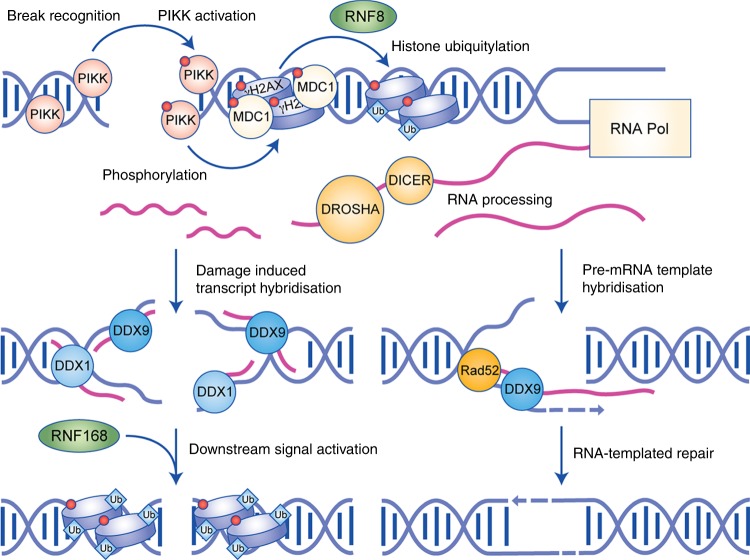Fig. 4.
Schematic model of the possible mechanisms of RNA-dependent DNA repair (RDDR). Repair is initiated in the same way as canonical double-stranded break (DSB) repair; however, at the point of the ubiquitylation cascade, an RNA production/processing step occurs, which produces DDRNAs. This DDRNA either takes the form of small RNA, which could hybridise to the broken DNA via the aid of helicases such as DDX1 and DHX9, or of a long RNA molecule, which could bridge the break by hybridising to the DNA via a RAD52-dependent strand invasion mechanism. Either the small RNA acts as a sequence-specific signal and allows propagation of canonical DSB repair pathways, or the long RNA molecule is used as a template for high-fidelity repair.

